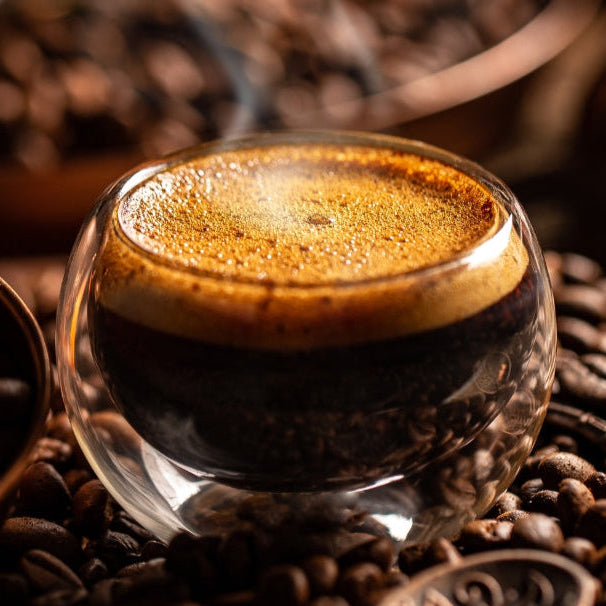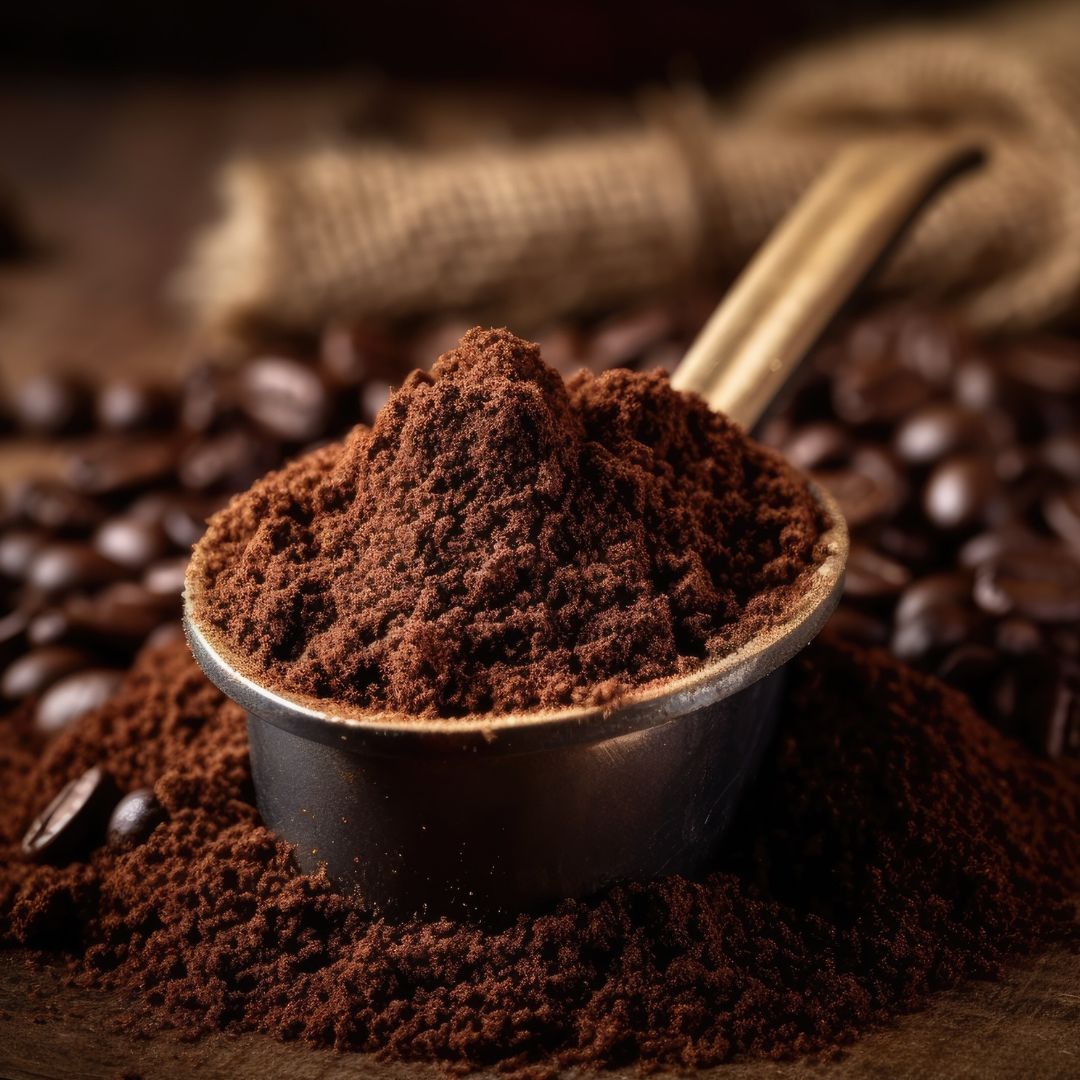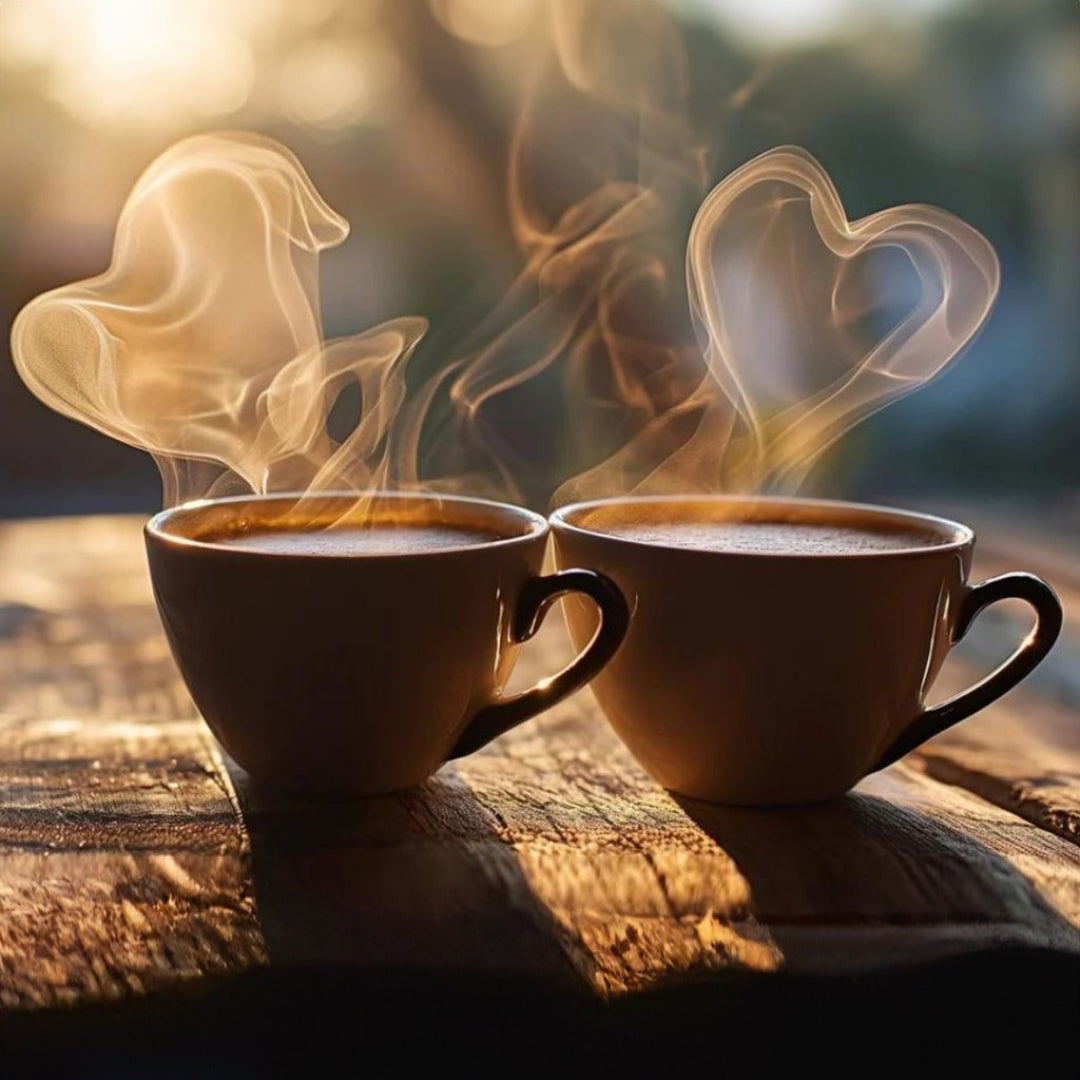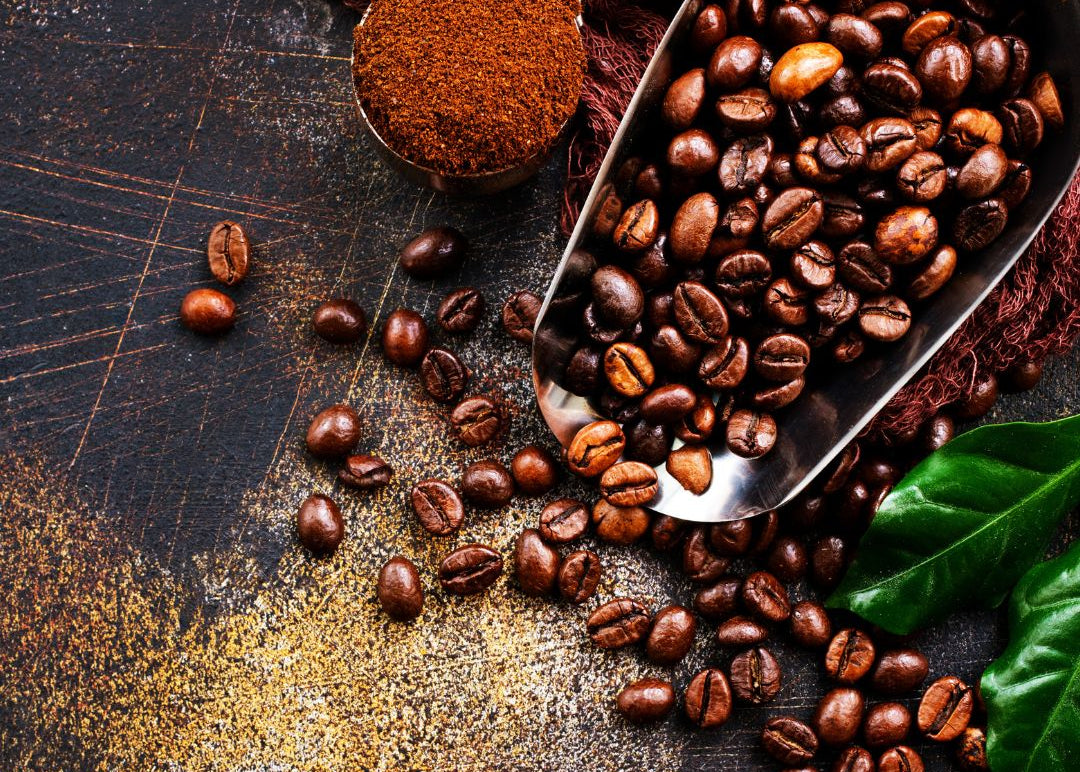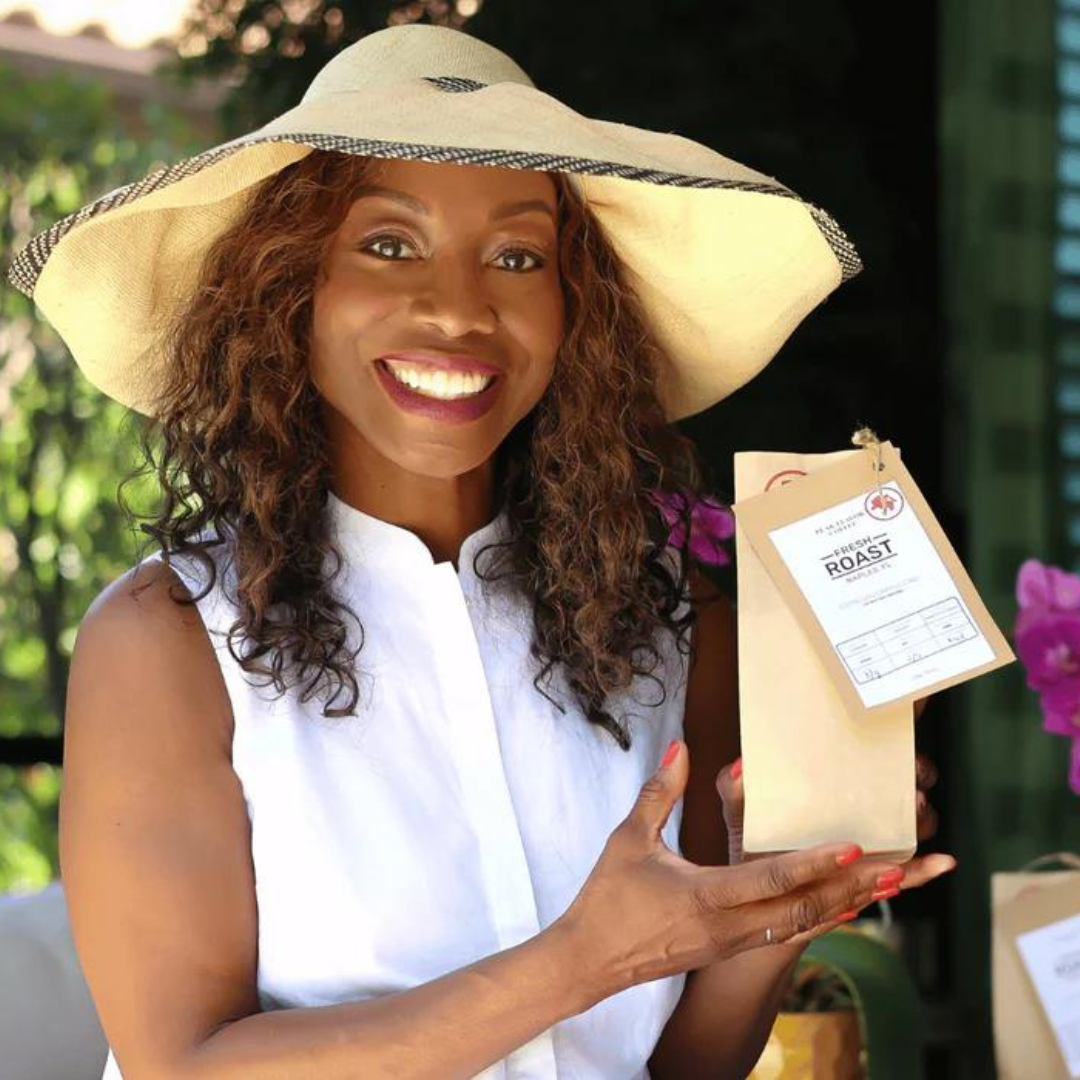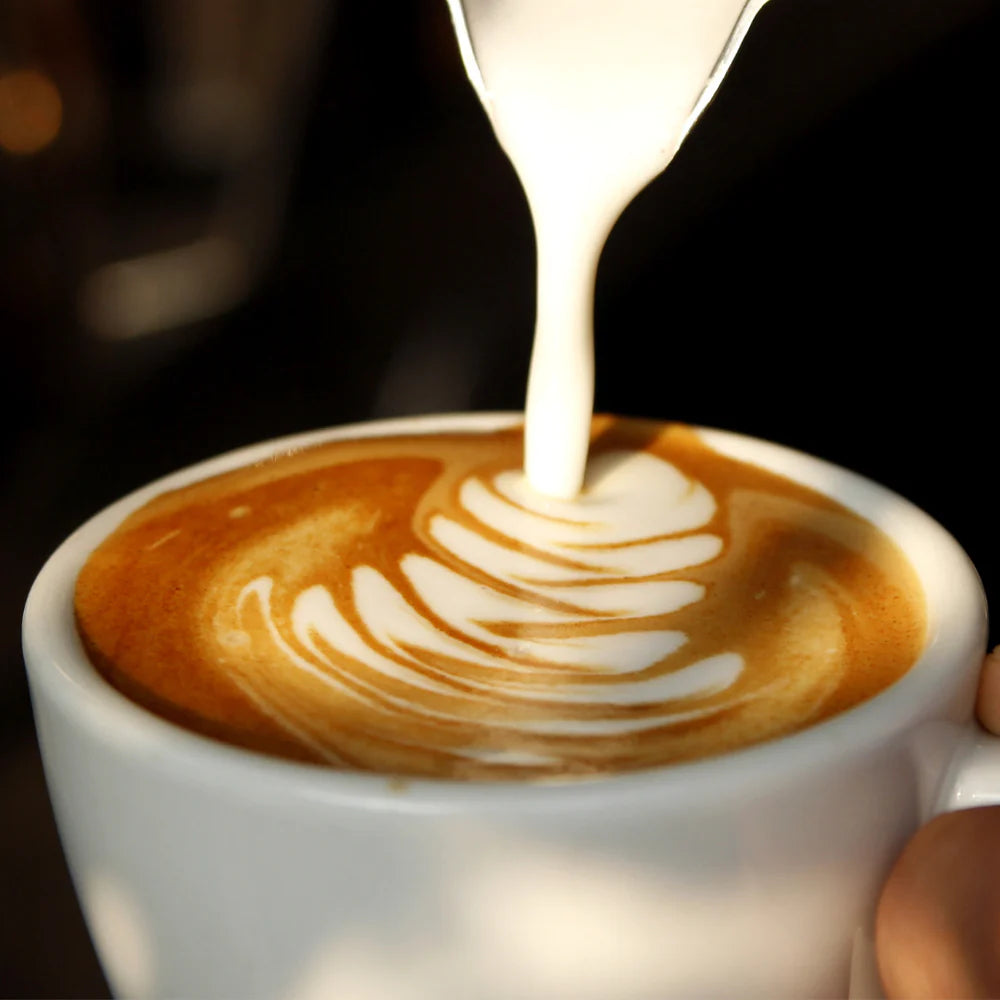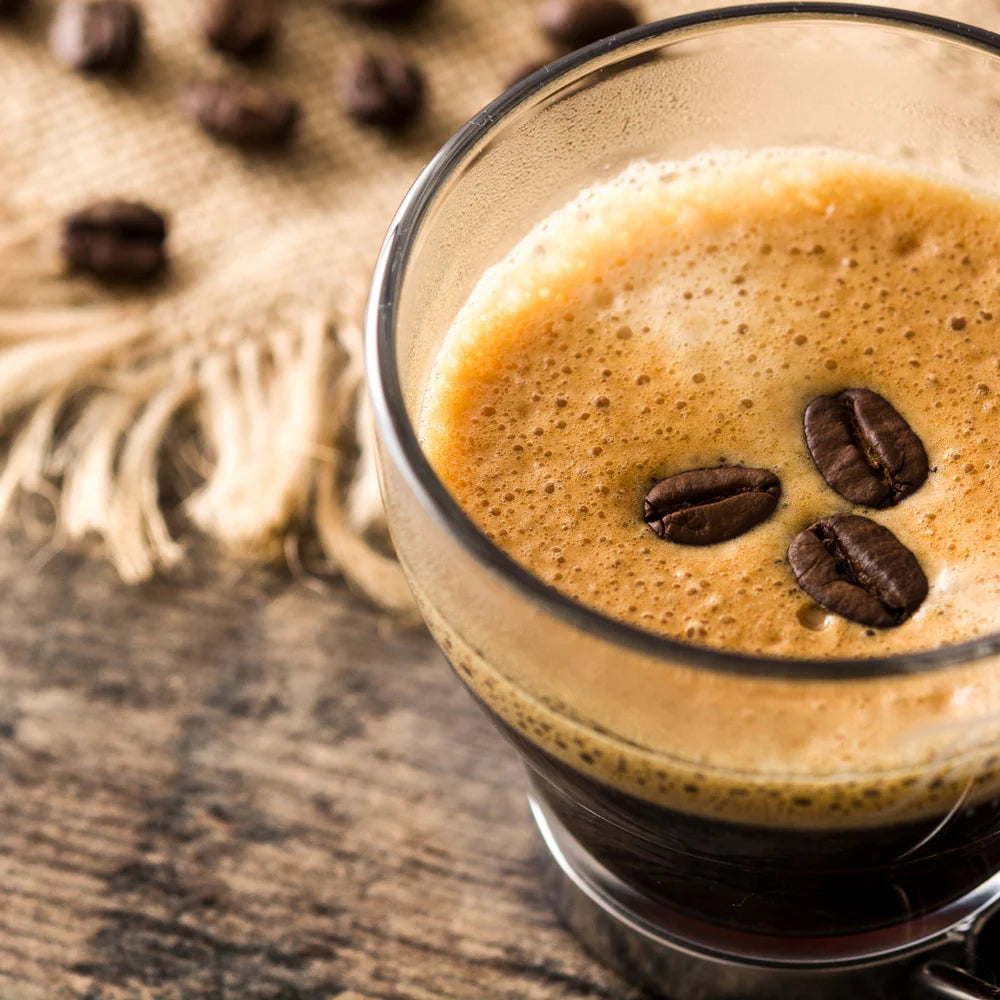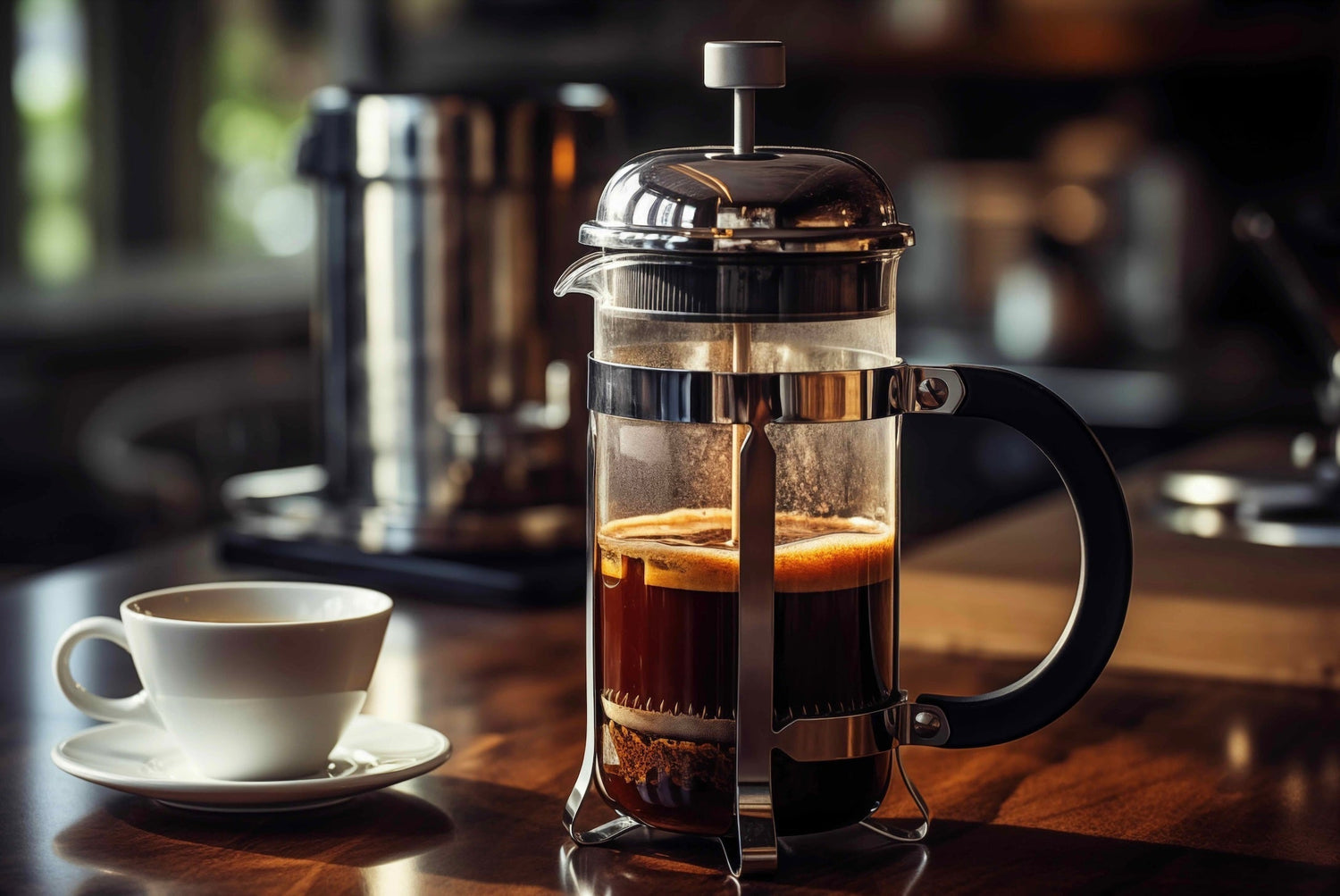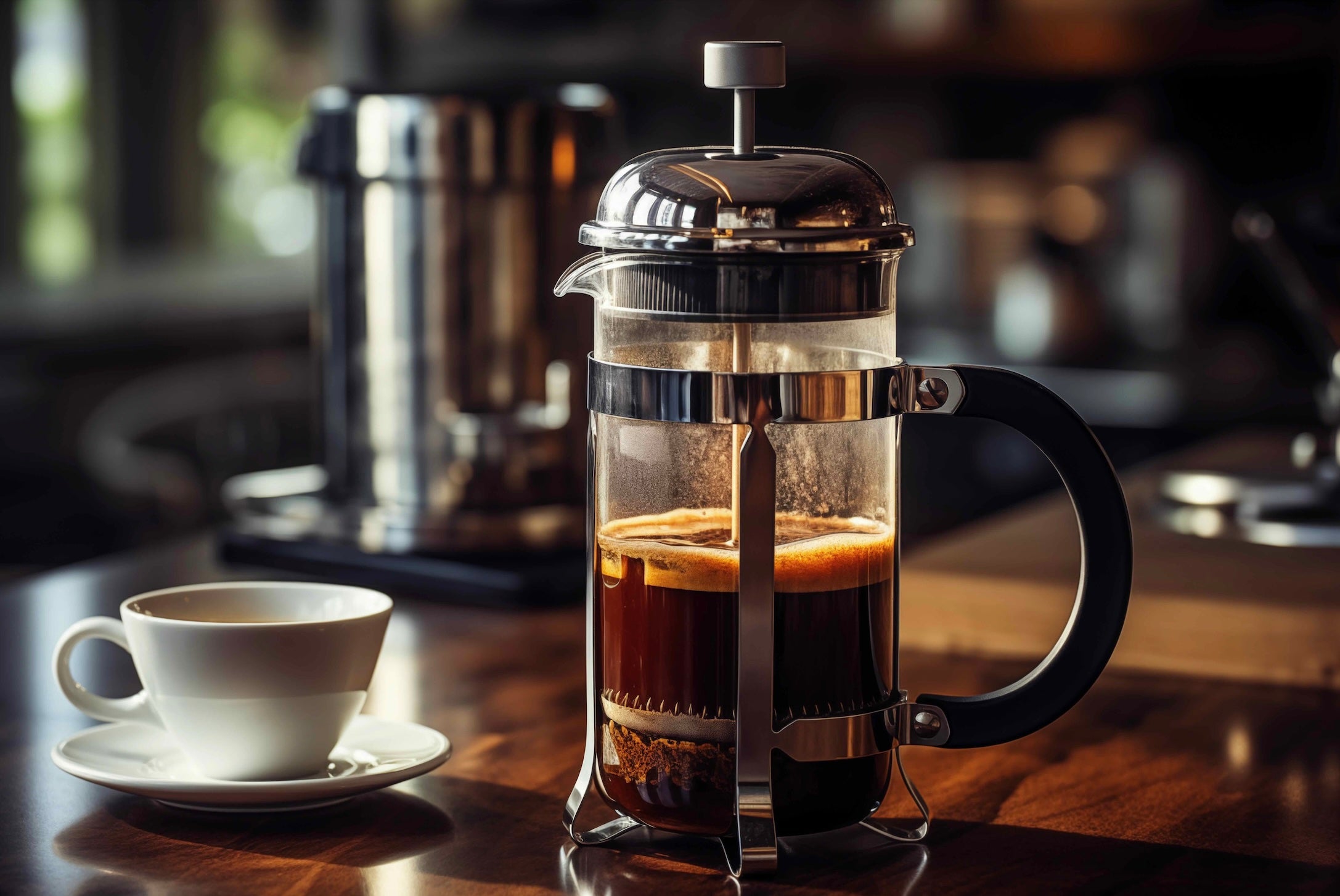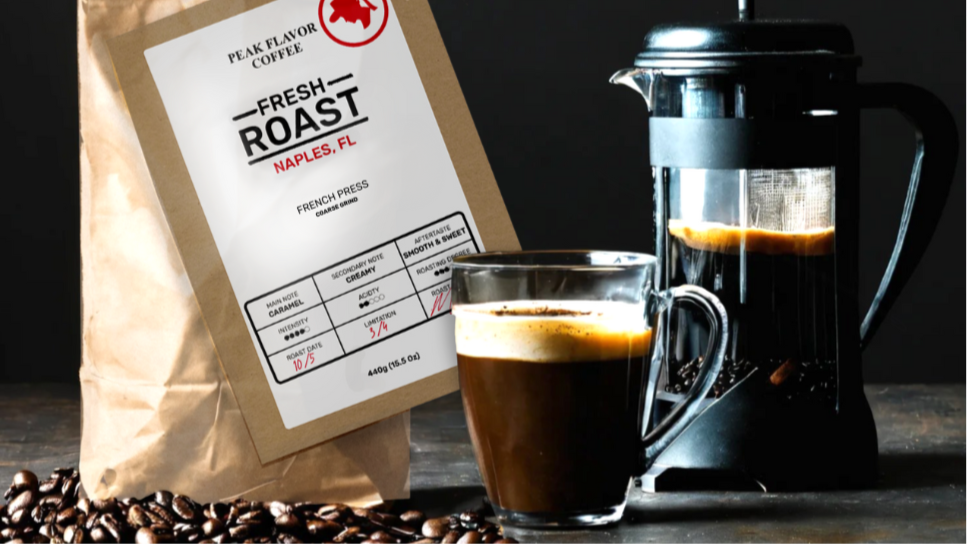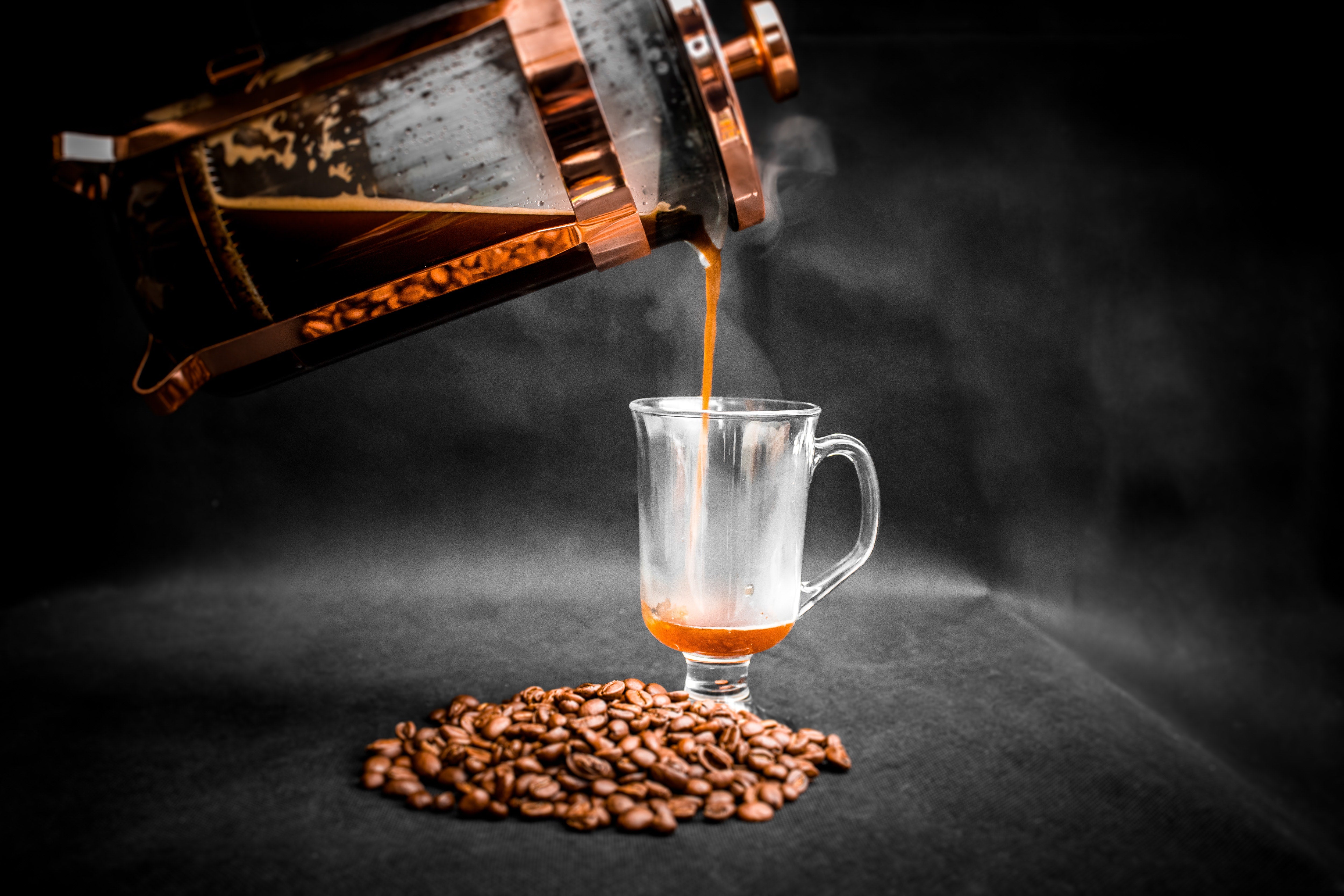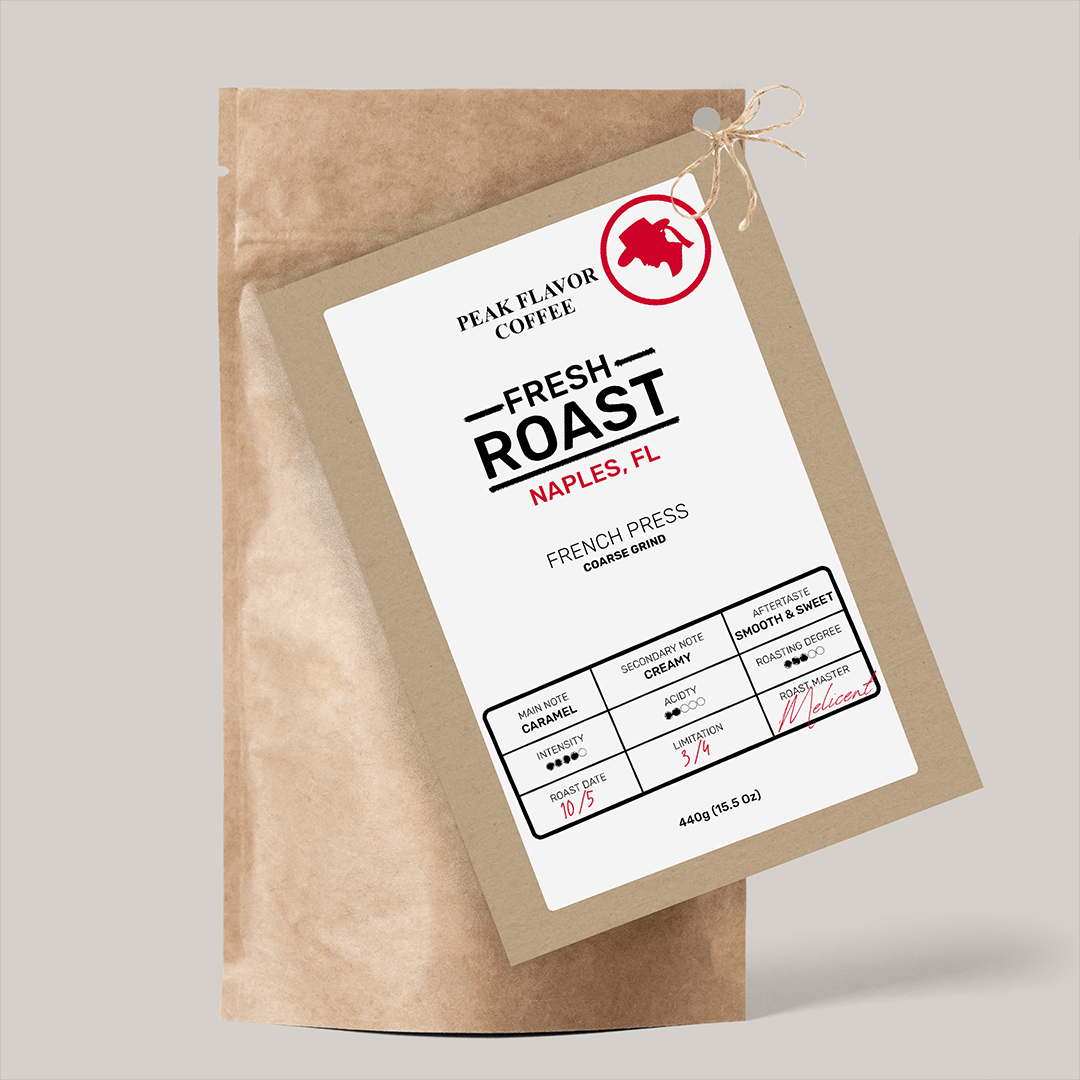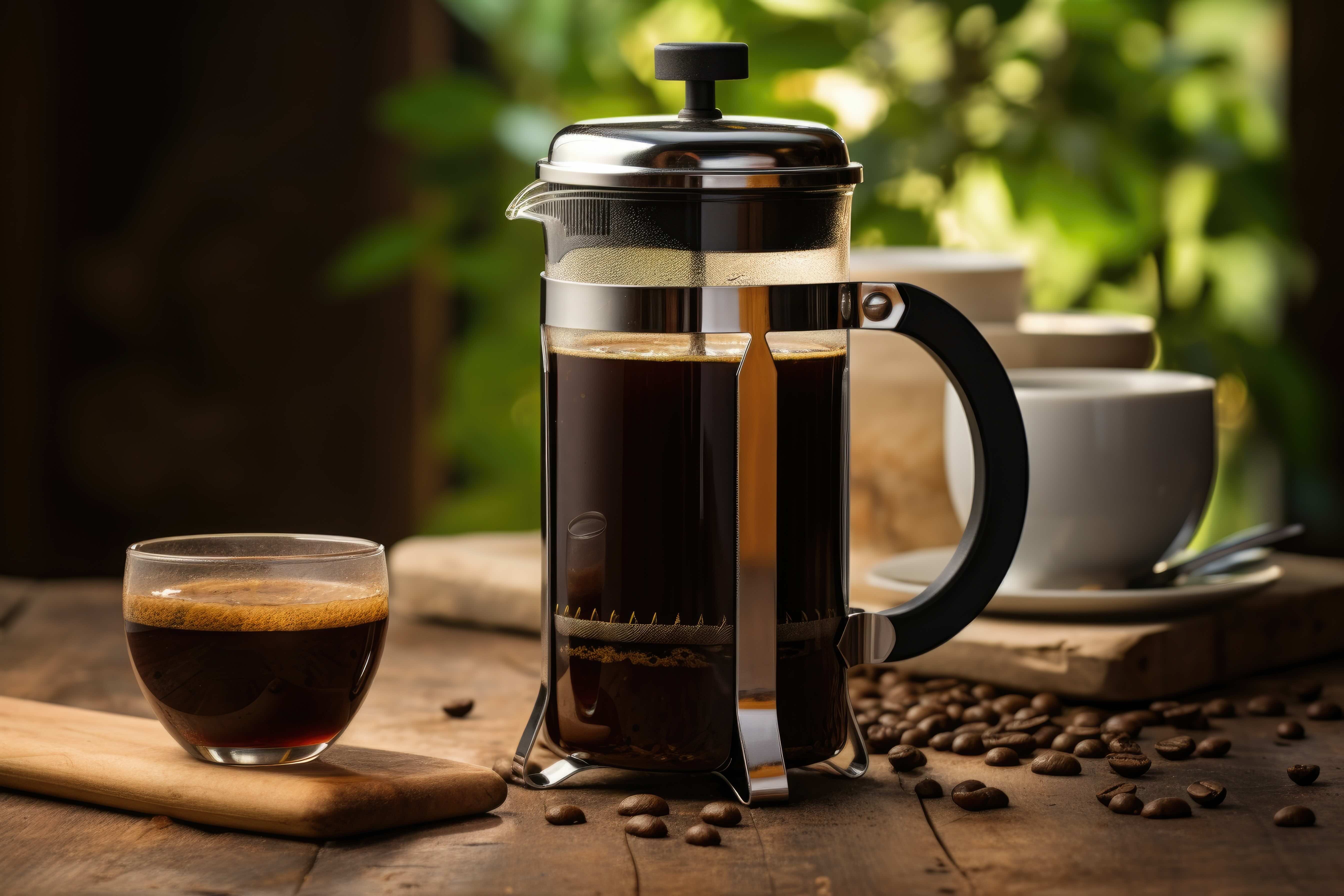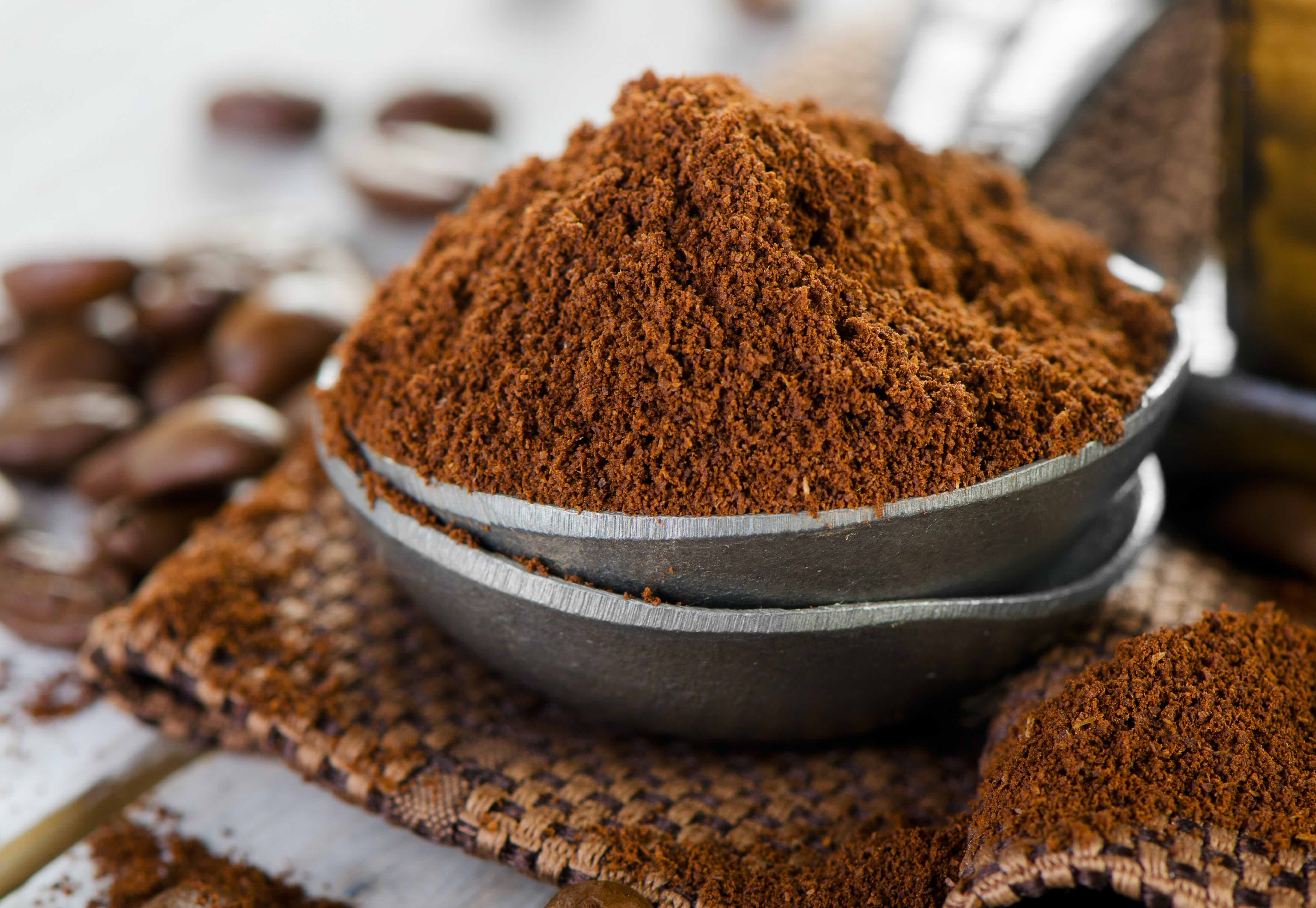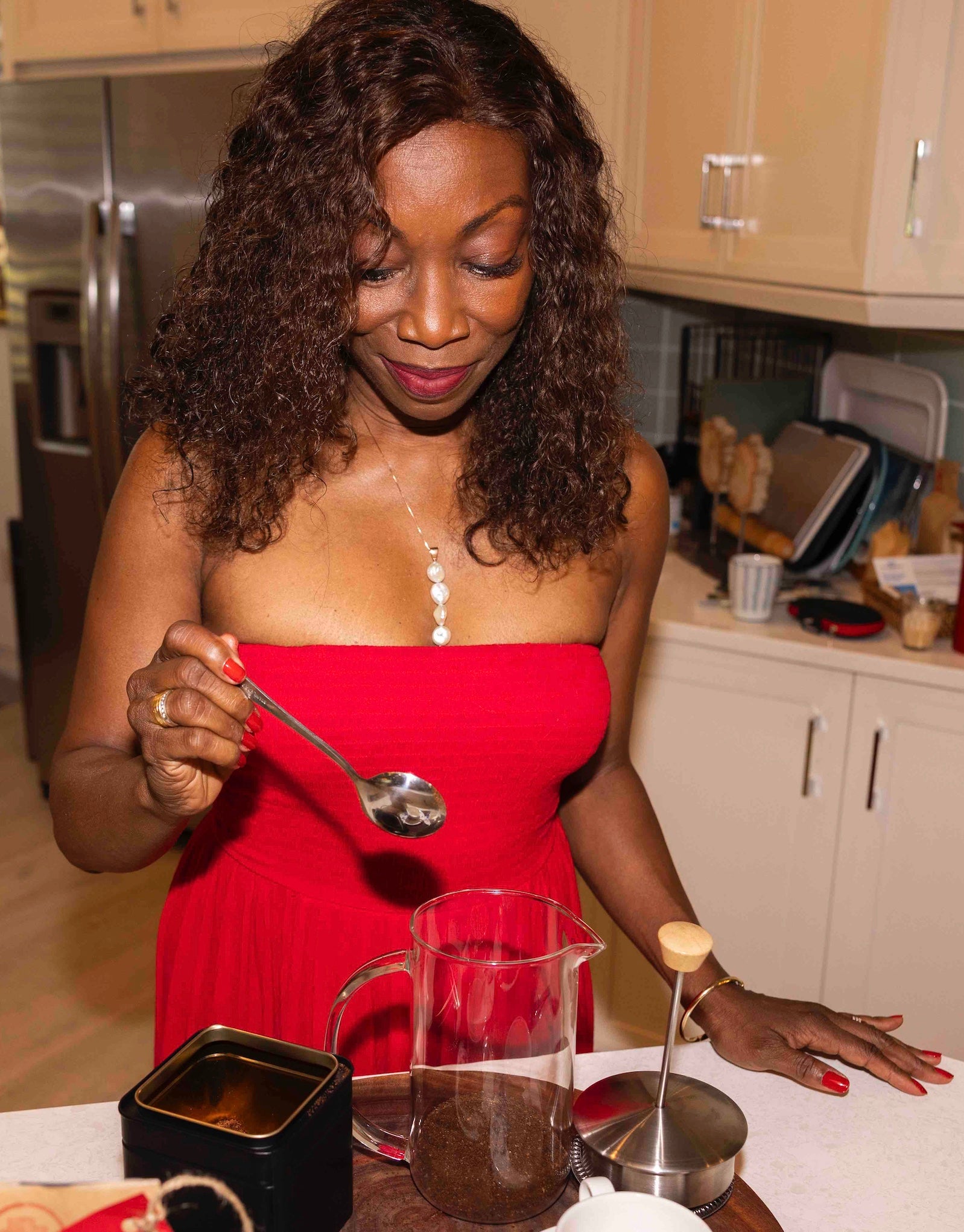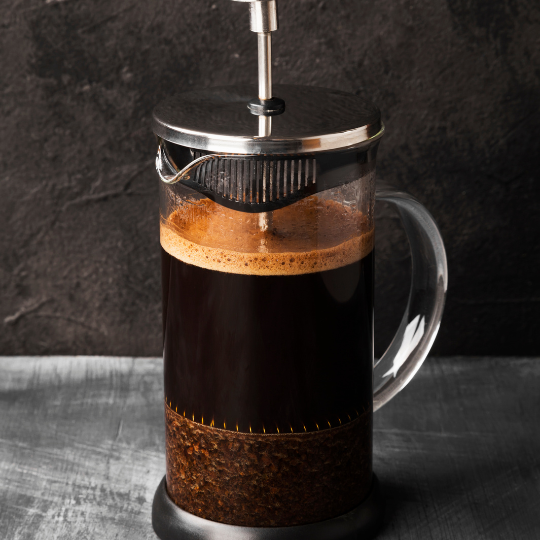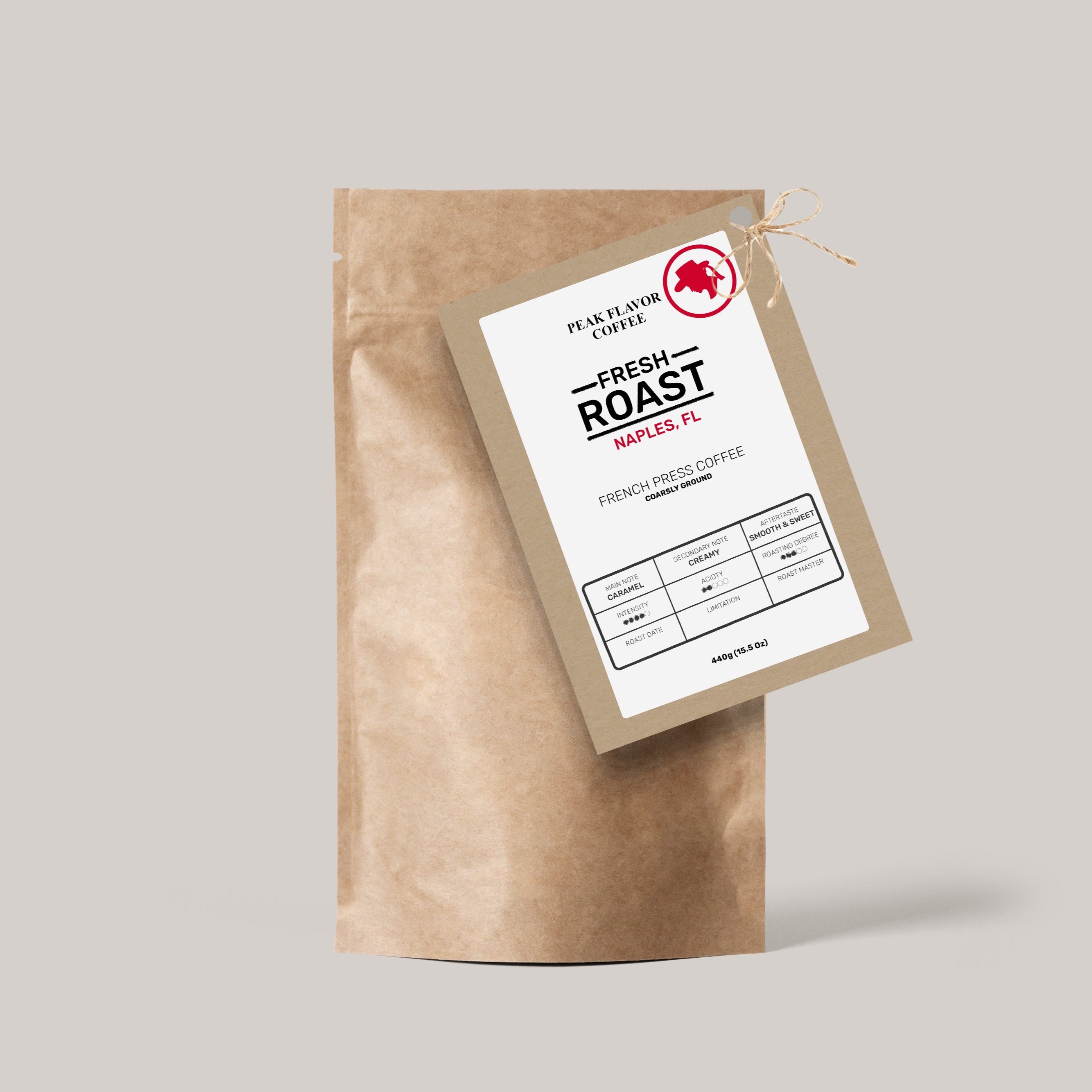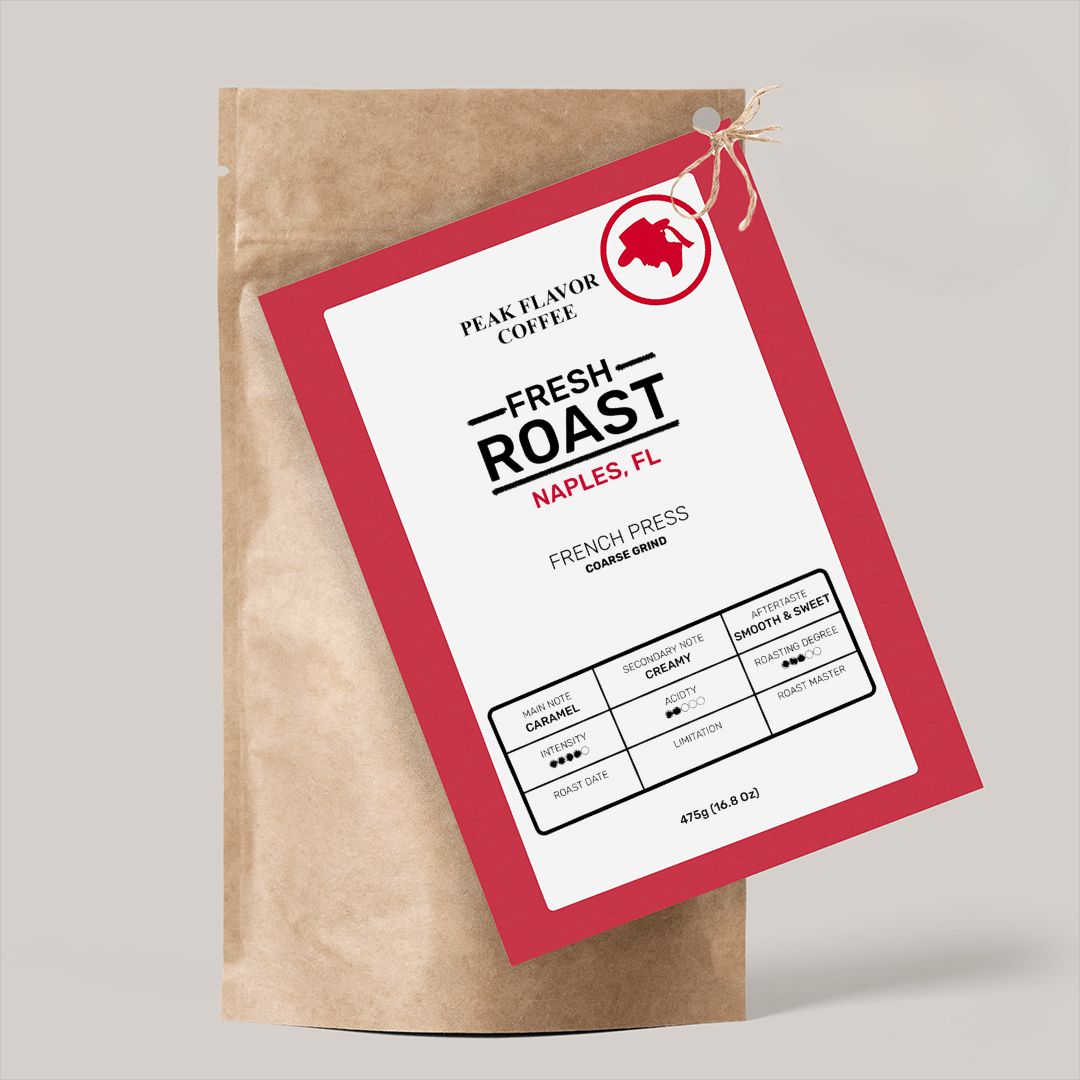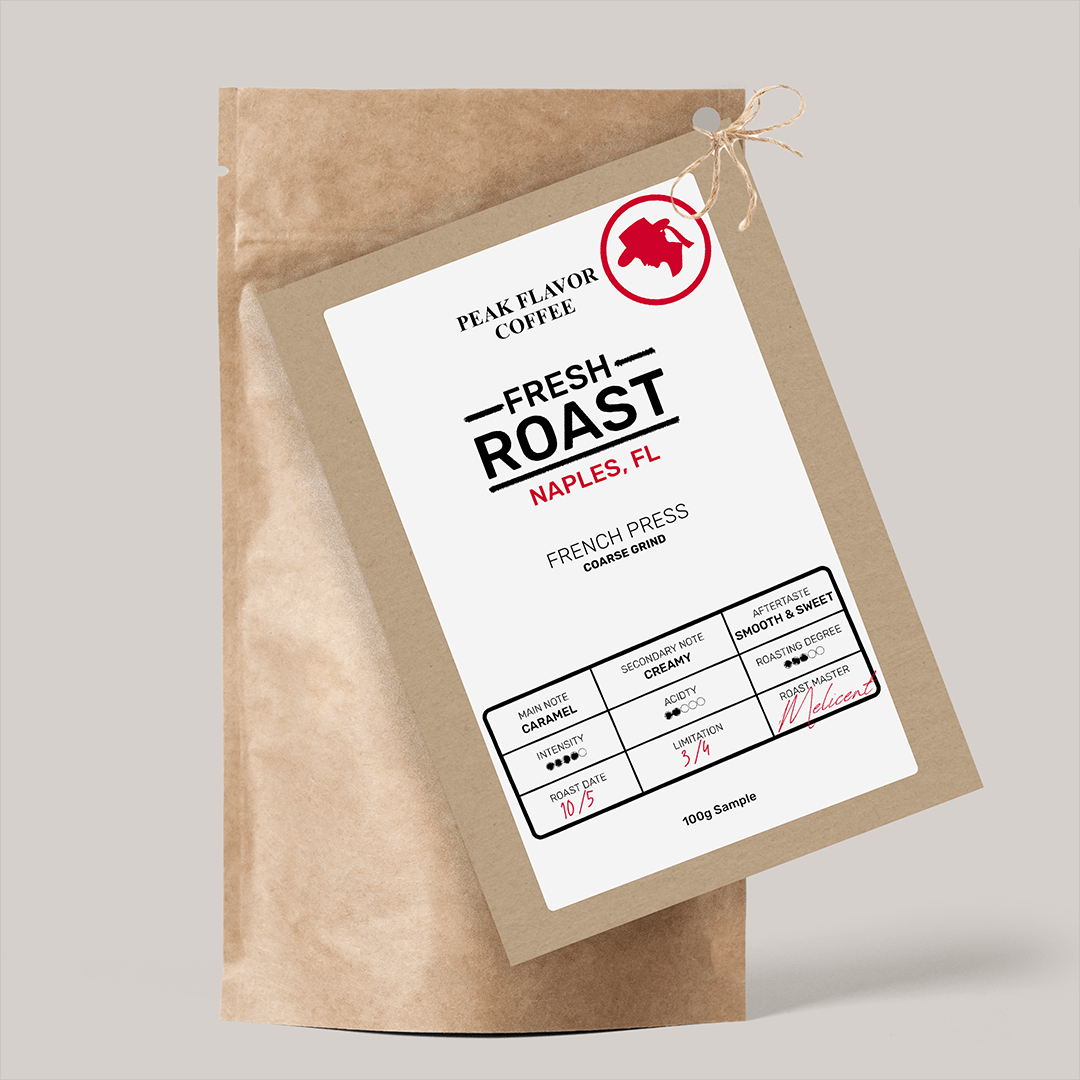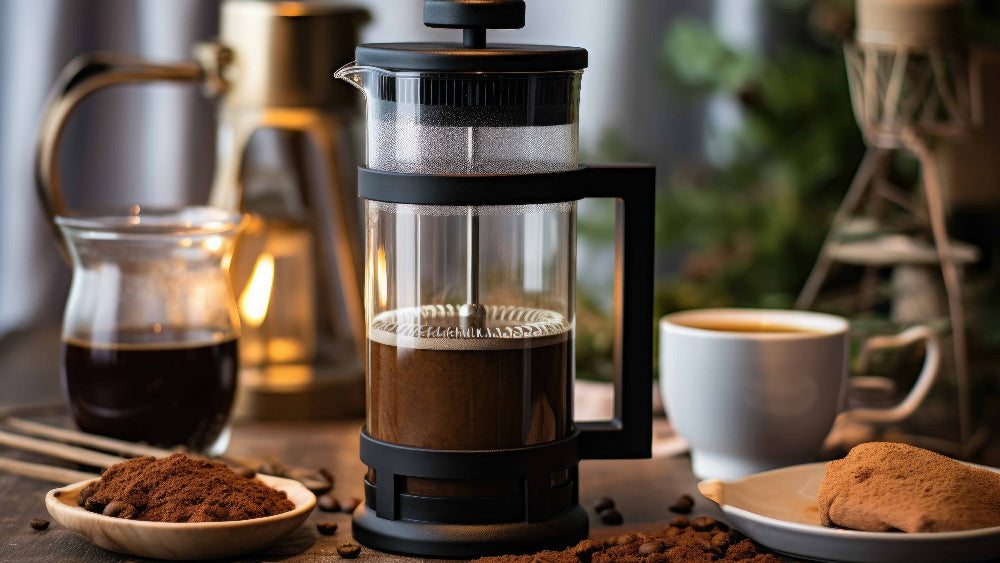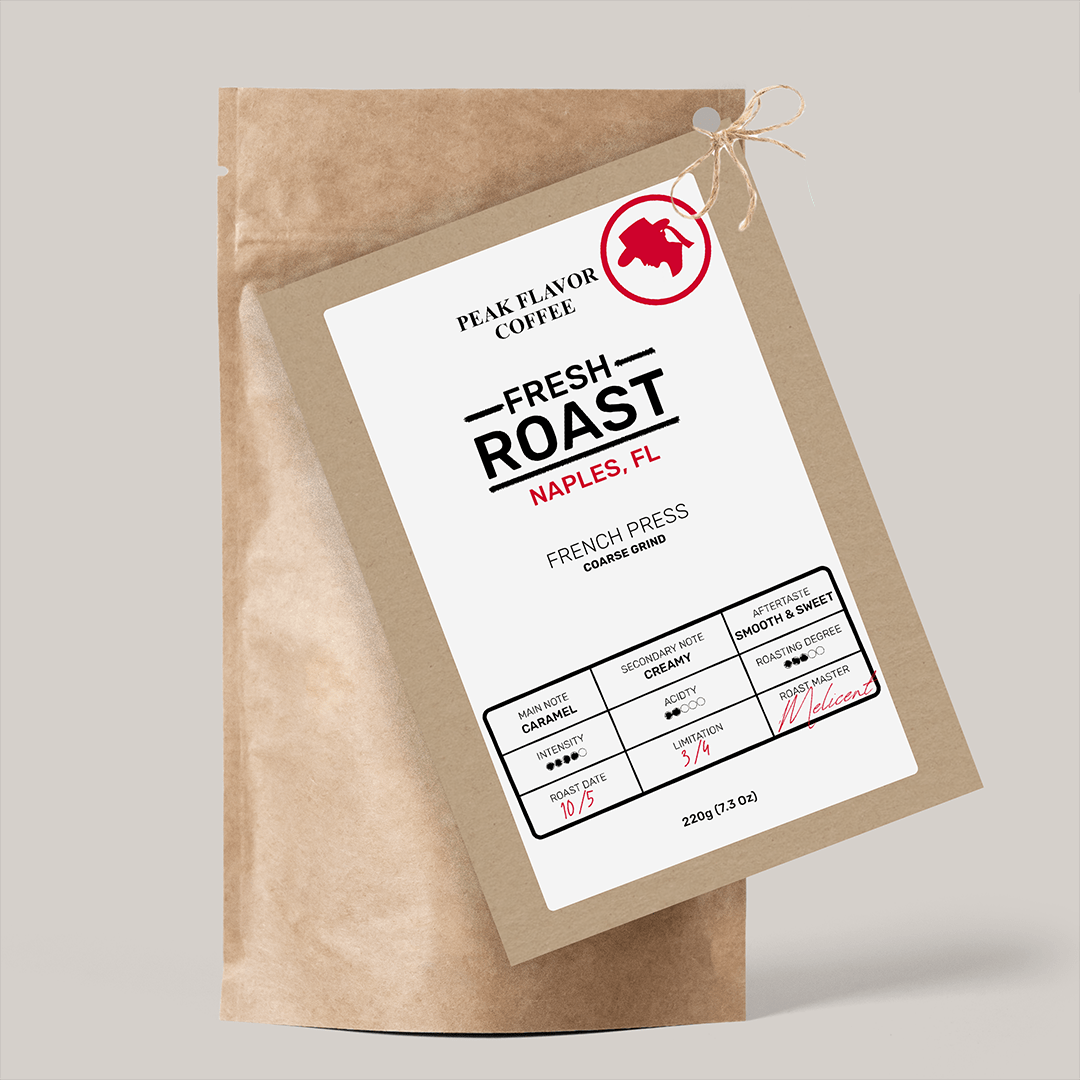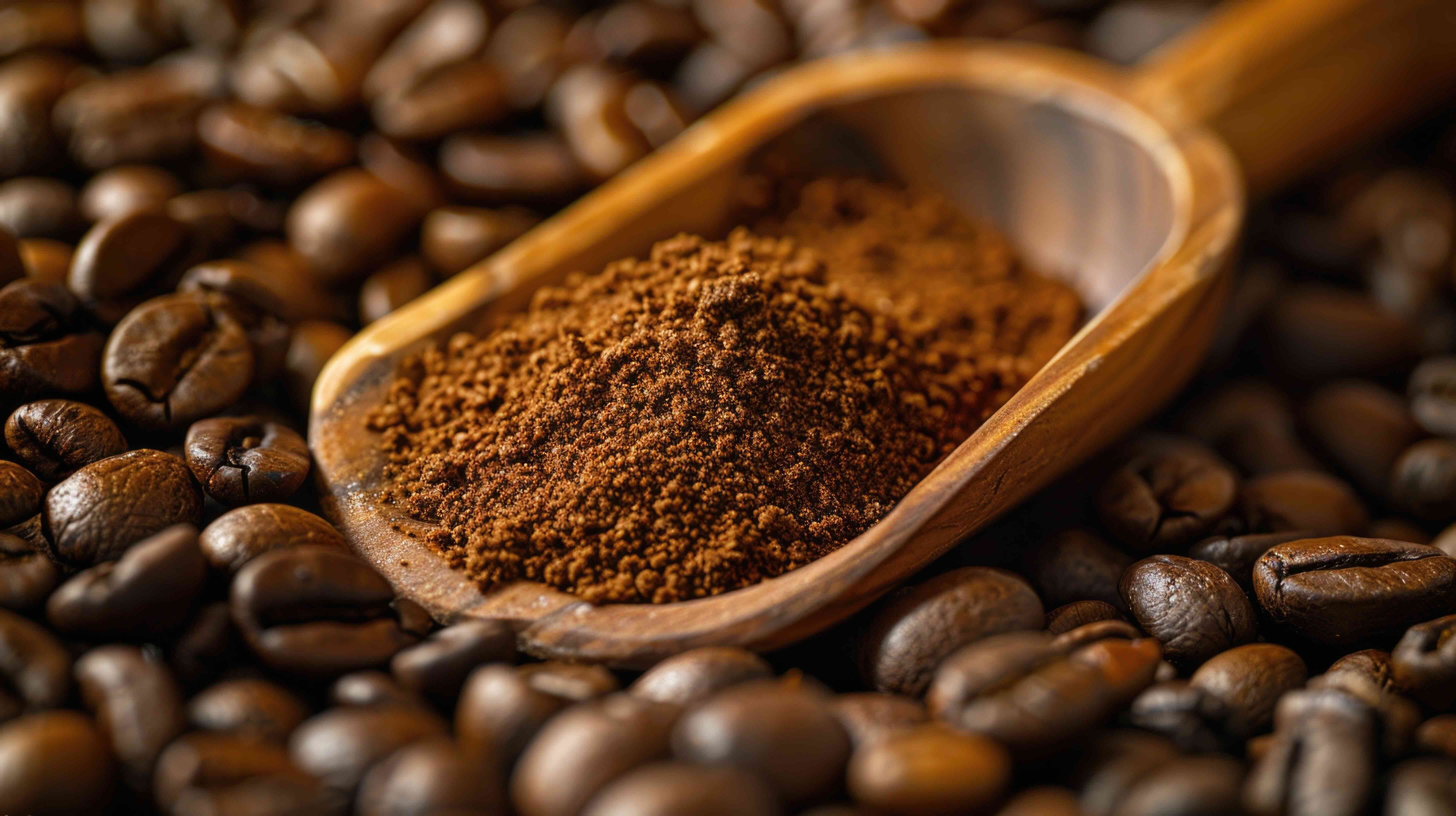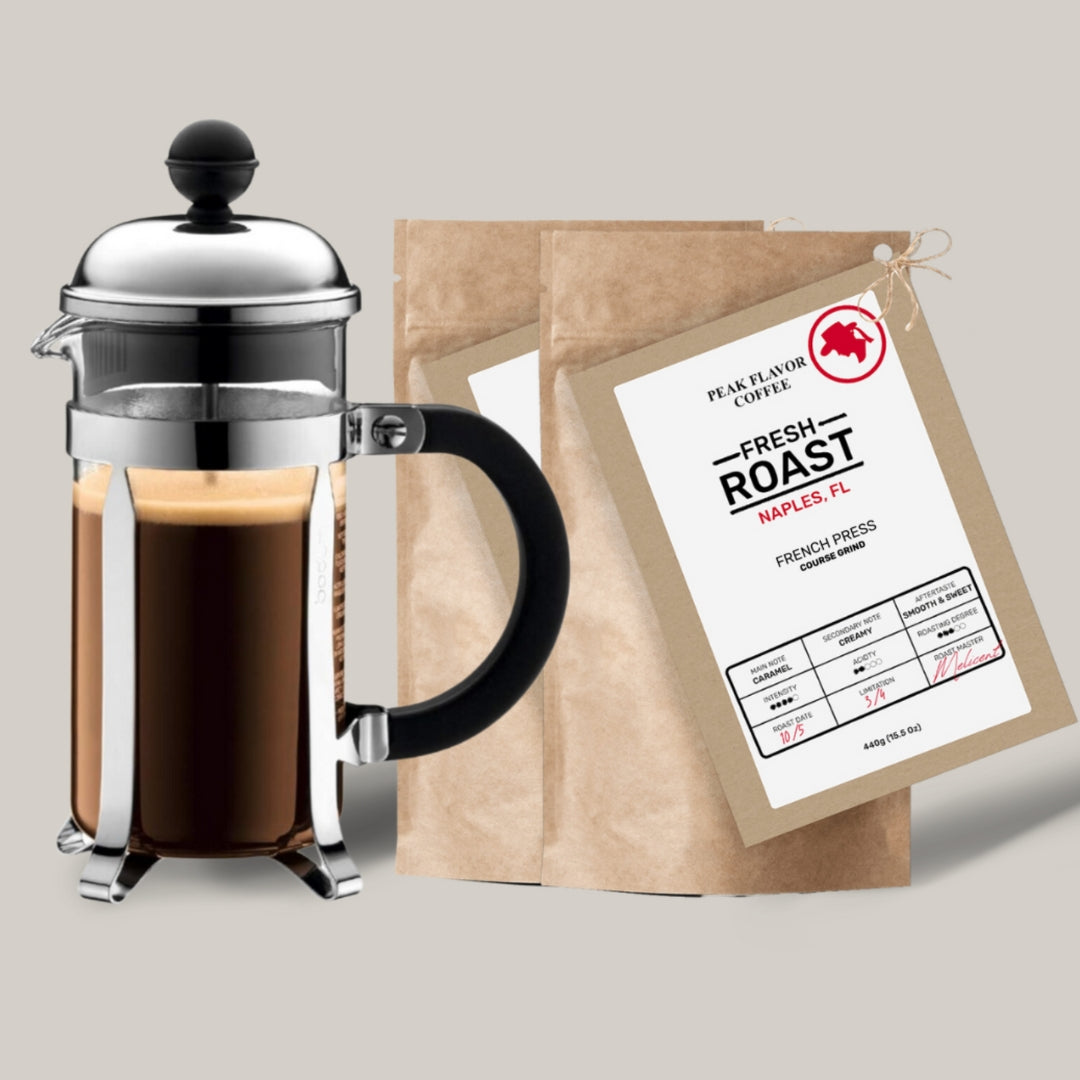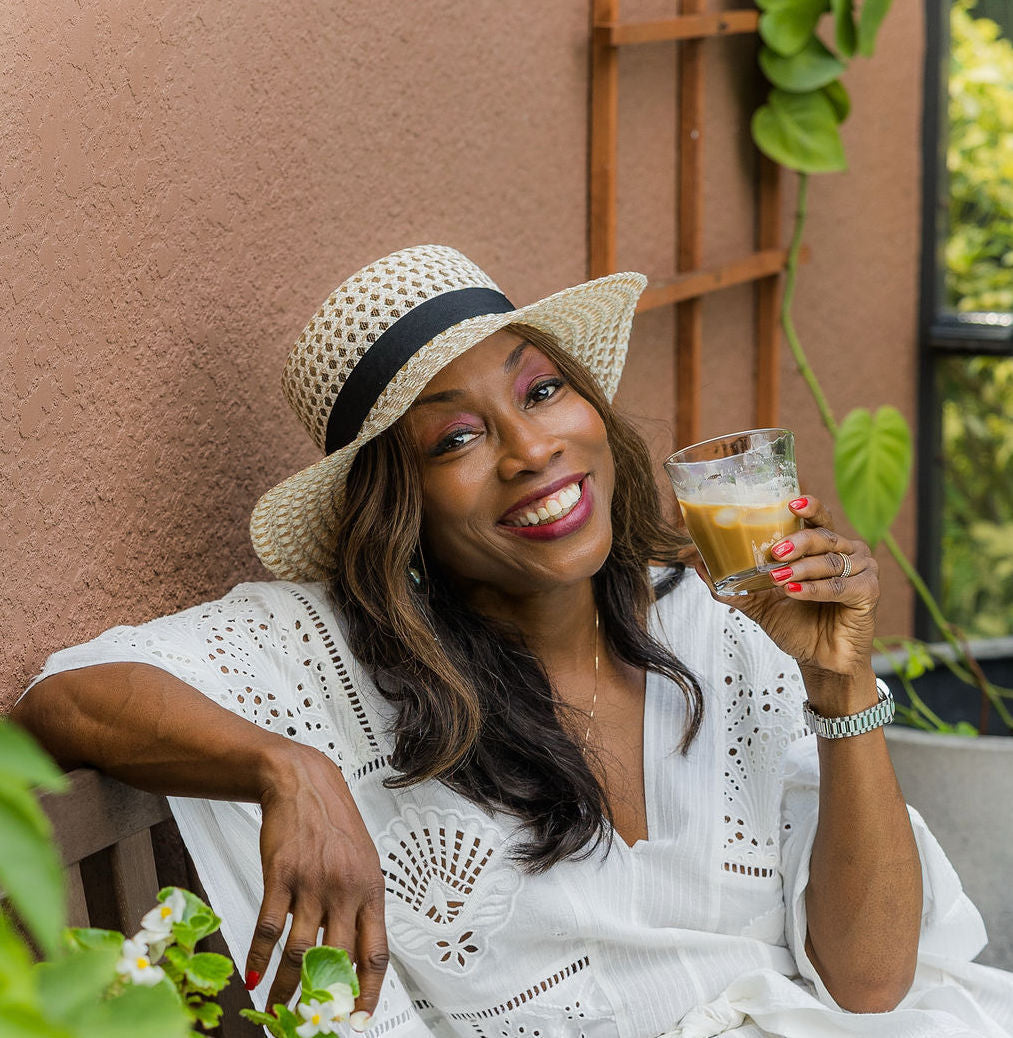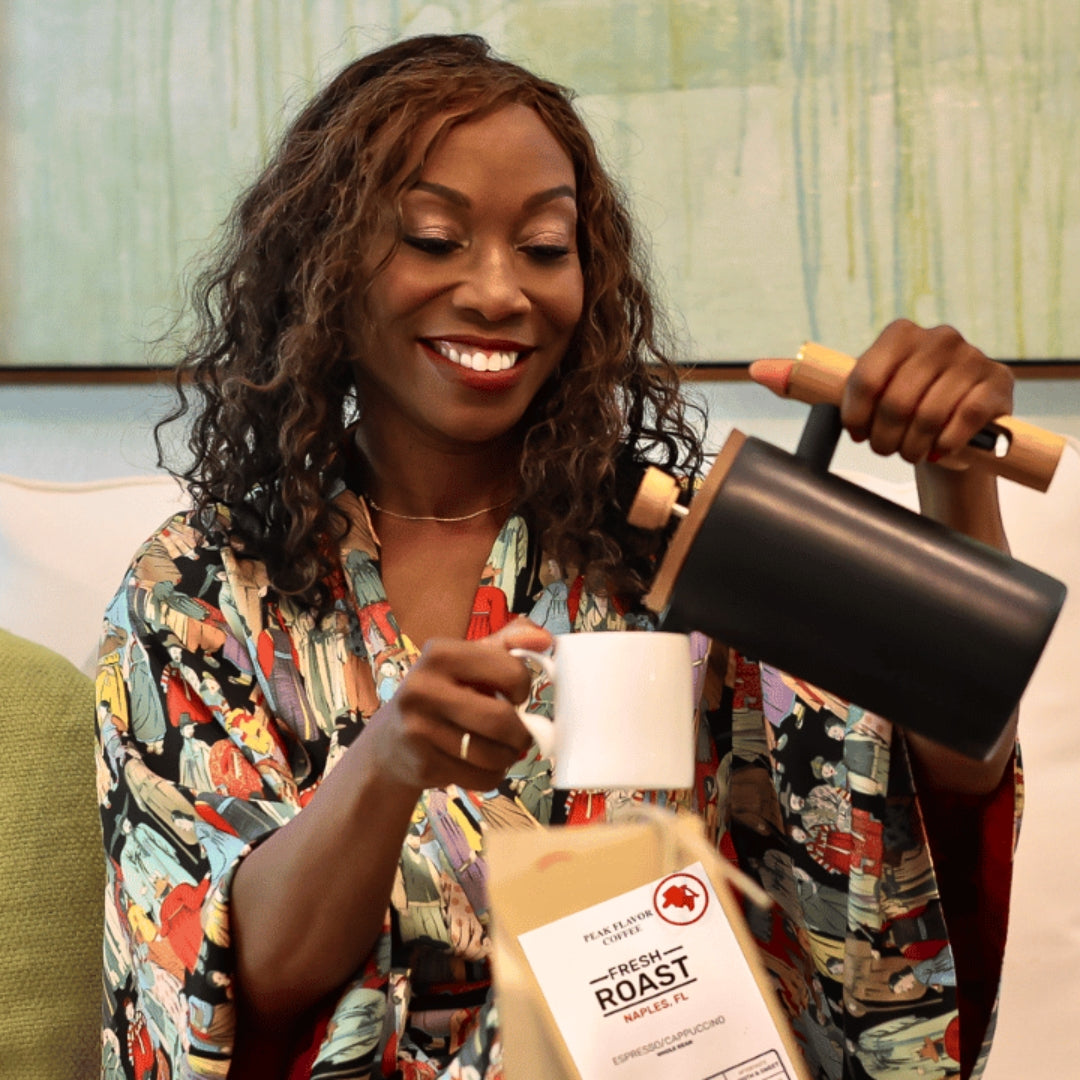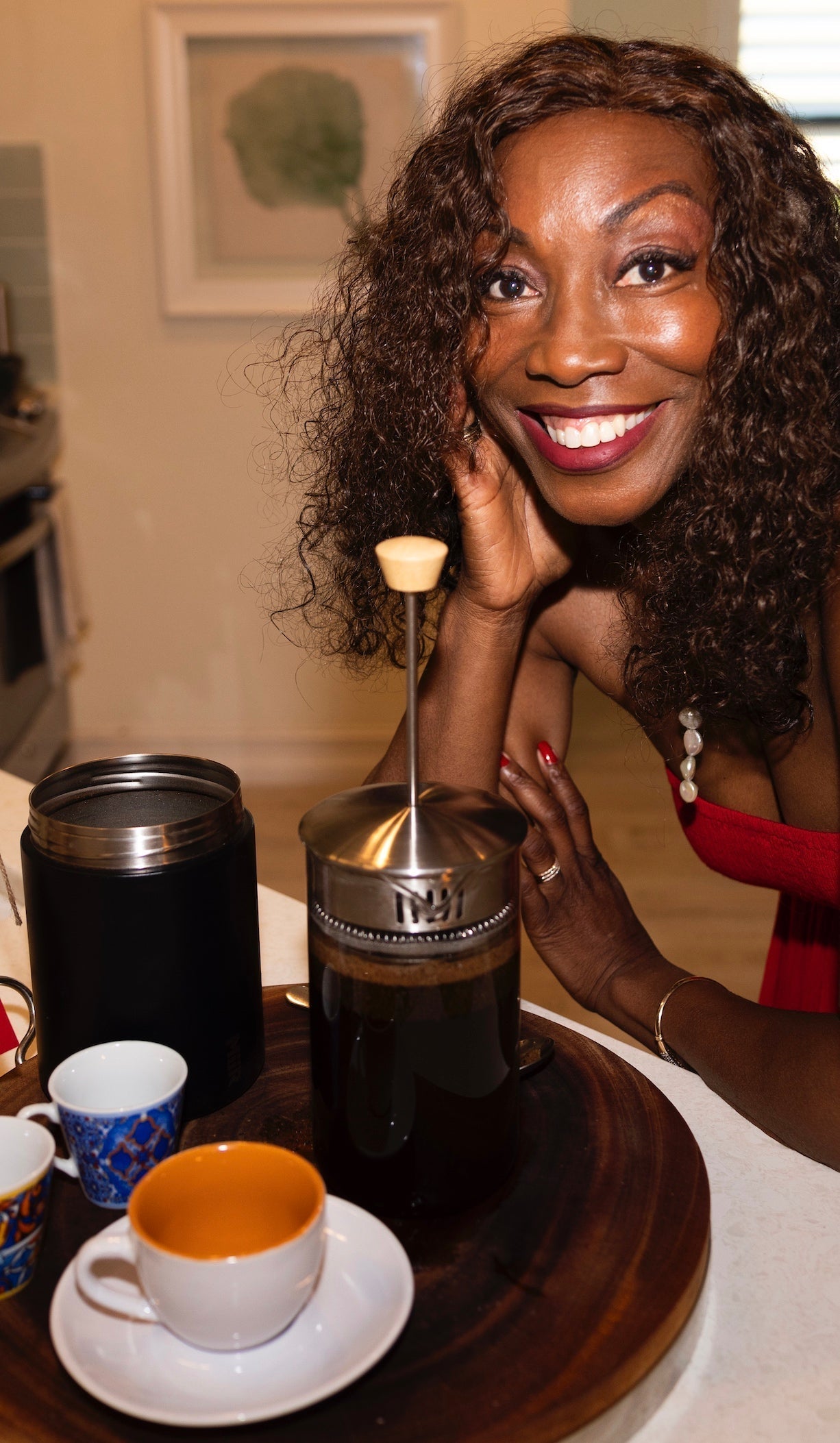French Press vs Pour Over: Richer, Stronger, Simpler
French Press Coffee: The Easiest Way to a “Coffee-gasm”
You know that moment. That glorious, lip-smacking, eye-closing, toe-curling first sip when your coffee tastes like it was brewed by angels with PhDs in roasting? That, my friend, is a coffee-gasm. And while pour-over coffee has its fans (we see you, beaker-wielding brew nerds), the French press is your ticket to caffeinated climax without the fuss.
Pour-over is a courtship - graceful, precise, maybe a little high-maintenance. The French press? It’s your passionate, low-key lover who gets right to the good stuff. It's stronger, bolder, and lets you just press, pour, and boom—bliss.
If you're chasing that deep, rich flavor high, French press is your go-to. Especially when you use coffee for French press that’s crafted for the experience: the right beans, the right grind, and the right roast.
So let’s talk about how to turn your humble kitchen into a temple of taste-induced euphoria.
Why French Press Wins: Bold Flavor, No Barista Degree Required
French press coffee is full-bodied, oil-rich, and flavor-forward. Thanks to its metal mesh filter, nothing gets stripped away—not the flavorful oils, not the subtle notes, not the character. It’s like drinking coffee with the lights on—all the details are right there.
Compare that to pour-over, which uses paper filters. Sure, the taste is clean, but it’s also a little... polite. Sometimes too polite. Those filters are flavor thieves, soaking up the oils that give your brew its deep personality.
Let’s break it down:


Let’s not beat around the bush. Great French press coffee is all about precision and pleasure. And it starts with the right ingredients.
1. The Right Beans: Coffee for French Press
If your beans are basic, your brew will be too.
You want high-grown beans - like those from the hills of Brazil and Honduras. These naturally sweet, low-acid beauties hit you with caramel, vanilla, and honey vibes. They’re rich in natural oils that bloom like mad in a French press. Basically, the bean equivalent of smooth jazz and candlelight.
Pro Tip: Look for beans labeled best coffee for French press—they’re crafted specifically to bloom and boom in your press. Learn more about the best coffee beans for French press. Explore the best coffee for french press right here.
2. The Right Grind: Coarse Ground Coffee
Grind size matters. (Say it louder for the people in the back.)
French press demands coarse ground coffee- around 1050 microns, if you’re getting nerdy with it. This prevents over-extraction (aka that bitter taste of regret) and lets your coffee steep its way into peak performance. Too fine a grind and you’re drinking silty sadness.
Want it perfect every time? Skip the pre-ground sad stuff on grocery shelves (that’s been aging like a forgotten avocado) and get fresh-ground beans made just for your press. Understand what defines the right coffee grounds for French press. Discover our most popular French press grinds right here.
3. The Right Roast: Medium-Dark to Dark
Light roasts might be great for pour-over, but dark roasts are where the French press shines. That’s because the full immersion method brings out the caramelized sugars, oils, and bolder notes like chocolate and toasted nuts. Think of it as flavor foreplay with a strong finish. Learn more about roasting coffee for French press.
- Medium-Dark: Balanced body with sweet complexity
- Dark Roast: Bold, rich, and brooding (in a sexy way)
The Secret Sauce: Roast Timing and the Flavor Climax
Here’s where things get steamy (and scientific): coffee reaches its flavor climax around day 8 after roasting. Yeah, coffee has a peak performance window—like athletes, only more delicious.
- Days 1–7: It’s still “degassing,” releasing CO₂, and flavors are immature.
- Days 8–14: Boom. This is the sweet spot. Coffee-gasm zone. Balanced, aromatic, and alive.
- Days 15–21: Still good, but flavor starts to fade like a love song on repeat.
- After day 21: You’ll taste more bitter and sour notes. Still drinkable, but not peak.
So, if you want that explosive, soul-hugging flavor? Brew between days 8–14 post-roast. That’s the real secret to elevating your morning from “meh” to “ohhhh yesss.”

How to Use a French Press?
(AKA How to Find Morning Bliss)
If you’ve never used one, don’t worry - how to use a French press is stupidly simple. No gooseneck kettle acrobatics required.
- Scoop: Use 1:15 coffee-to-water ratio (e.g., 30g coffee to 450ml water).
- Steep: Add hot water (just off boil), stir, and let sit for 4 minutes.
- Press: Slowly press down the plunger.
- Sip: Close your eyes. Let it happen. You’ve arrived.
Bonus: There’s no need to hover over your brew like a helicopter parent. Just steep and chill.
Why French Press is the People's Champion
- No Paper Filters: Keeps the oils, keeps the flavor.
- Low Tech: No scale, no timer, no drama.
- Portable: Brew at home, at work, or next to a tent in the woods.
- Satisfying: It hits harder, lingers longer, and just feels right.
Pour-over can be beautiful, nuanced, and perfect—for those mornings when you want your coffee to wear a monocle. But when you want flavor that grabs you by the taste buds and makes you feel something, French press delivers. Hard.
Final Sip: French Press = Peak Flavor, Minimal Effort
So, is French press better than pour-over? If you're after richer flavor, stronger body, and the simplest path to caffeinated climax, then yes. Absolutely. Unequivocally. Pour-over is an art. French press is an experience.
With the right beans, grind, roast, and timing, you’re just one plunge away from that elusive, delicious moment when everything feels right. A coffee-gasm, if you will.
Don’t settle for a limp brew. Brew bold. Brew right. Brew your own French press coffee gasm.
French press coffee hugs,
Melicent

